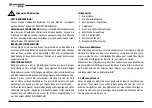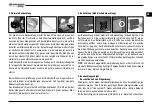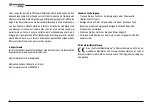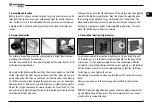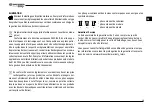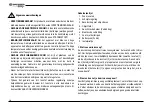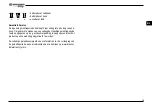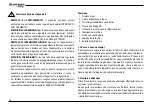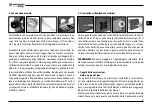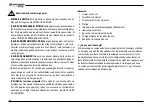
9
DE
2. Assembly and location
Before you start, choose an ideal location for using your microscope. It’s
important that you choose a spot with enough light for normal observa-
tion. Furthermore, it is recommended that you place the microscope on
a stable surface, because a shaky surface will not lead to satisfactory
results.
3. Normal observation
For normal observation, place the microscope in a bright location (near
a window or desk lamp, for example).
Turn the focus knob (2) to the upper stop, and set the objective turret (3)
to the lowest magnification.
Now, turn on the light using the switch on the microscope base. You’ll find
further tips about the light source in the next section. Now, place a pre-
pared slide under the clips on the stage (4), directly under the objective
(1). When you take a look through the eyepiece, you can see the magni-
fied specimen. At this point, you still might see a slightly fuzzy picture.
Adjust the image sharpness by slowly turning the focus knob (2). You
can now select a higher magnification by turning the objective turret and
selecting a different objective.
When you do so, note that the sharpness of the picture must be adjusted
again for the higher magnification. Also, the higher the magnification,
the more light you will need for good illumination of the picture. The
wheel with pinhole apertures (9) below the microscope stage (4) will
help you in viewing very bright or clear-sighted preparations. Turn the
wheel (9) till the best contrast is achieved.
4. Observation (electronic light source)
For observation with the electronic light source (6) you need to insert
3 AA batteries 1.5 V, in the battery compartment (8) on the base of the
microscope (7). The battery compartment is opened using a Phillips
screwdriver. Insert the batteries with the correct polarity (+/- indication).
Put the battery cover first into the small opening so that the lid fits per
-
fectly. Now you can tighten the screw.
The lighting is switched on when you turn the switch on the microscope
base.
Now you can observe in the same way as described in the previous
section.
TIP:
The higher the magnification you use the more light is required for
a good illumination of the picture. Therefore, always start your experi-
ments with a low magnification.
Summary of Contents for 8851301
Page 3: ...C B D E H F F G I 3x AA G ...




